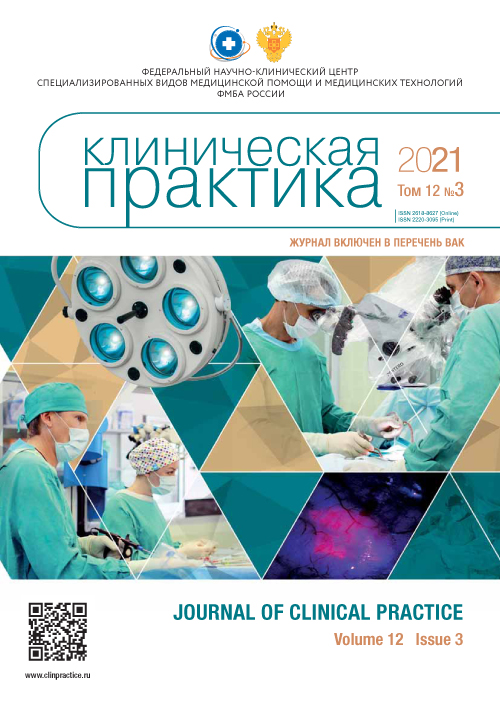The tandem gait test: kinematics and temporal parameters for normal children and for posterior fossa tumor survivors
- Authors: Skvortsov D.V.1,2,3, Kasatkin V.N.4, Aizenshtein A.D.3,4, Anisimov V.N.5
-
Affiliations:
- The Russian National Research Medical University named after N.I. Pirogov
- Federal Research and Clinical Center of Specialized Medical Care and Medical Technologies FMBA of Russia
- Federal Center of Brain and Neurotechnology
- Dmitry Rogachev National Medical Research Center of Pediatric Hematology, Oncology and Immunology, Medical and Rehabilitation Scientific Center “Russian Field”
- Lomonosov Moscow State University
- Issue: Vol 12, No 3 (2021)
- Pages: 13-20
- Section: Original Study Articles
- URL: https://journals.rcsi.science/clinpractice/article/view/77018
- DOI: https://doi.org/10.17816/clinpract77018
- ID: 77018
Cite item
Full Text
Abstract
Background: Tandem Gait (TG) testing is known as a clinical method for studying the walking function with complicated coordination. The precise biomechanical walking parameters in this test remain poorly investigated. Moreover, TG is a modified locomotion of walking. In general, walking is a highly automated movement. TG introduces a component of voluntary control into it.
Aims: A study of functional and biomechanical symptoms in children after the treatment for the posterior fossa tumor in the long term.
Methods: The study involved 15 healthy subjects aged 12 to 35 years (20.4±7.2), among them 4 men and 11 women — control group. The group of patients comprised 33 children who had a tumor of the posterior cranial fossa (HF) at the age of 7 to 17 years (12.3±3.1), of these 15 boys and 18 girls, who were admitted for rehabilitation treatment to the "Russkoe pole" Rehabilitation Center. A study on the TG kinematics was performed with the Optitrack system.
Results: The results showed asymmetry in the duration of the step cycle and an increase in its duration proportional to the severity of the functional state. The pelvic movements showed different abnormalities. The flexion-extension movements in the hip joints were characterized by an extension lag at the end of the transfer period and a slight decrease in the amplitude, which probably became more pronounced with an increase in the degree of the motor impairment. The movements in the knee joints demonstrated two main phenomena: an increase in the flexion setting of the joint and a decrease in the amplitude of the main swing flexion. In addition, there was a delay in the maximum of the swing flexion. The kinematic parameters of the TG of the examined patients, in contrast to the control group, are not stable. This is, presumably, due to the fact, that normally such a modification of walking is easily automated and does not require voluntary control. In patients with SCF, each step in the TG mode requires additional voluntary control, and under these conditions, the stability and repeatability of a movement are dramatically reduced.
Conclusions: In contrast to the routine clinical version of the test, the analysis of the movement biomechanics allows one to present an accurate qualitative and quantitative characterization of functional disorders. According to our research, motor function disorders develop at various levels of the musculoskeletal system. The degree of their severity is in a good agreement with the expert assessment of the patient's functional state.
Full Text
##article.viewOnOriginalSite##About the authors
Dmitry V. Skvortsov
The Russian National Research Medical University named after N.I. Pirogov; Federal Research and Clinical Center of Specialized Medical Care and Medical Technologies FMBA of Russia; Federal Center of Brain and Neurotechnology
Author for correspondence.
Email: skvortsov.biom@gmail.com
ORCID iD: 0000-0002-2794-4912
SPIN-code: 6274-4448
MD, Dr. Sci. (Med.), Professor
Russian Federation, Moscow; Orekhoviy bulvar, 28, 115682, Moscow; MoscowVladimir N. Kasatkin
Dmitry Rogachev National Medical Research Center of Pediatric Hematology, Oncology and Immunology, Medical and Rehabilitation Scientific Center “Russian Field”
Email: kasatkinv@bk.ru
ORCID iD: 0000-0003-1142-9796
MD, Dr. Sci. (Med.), Professor
Russian Federation, MoscowAlina D. Aizenshtein
Federal Center of Brain and Neurotechnology; Dmitry Rogachev National Medical Research Center of Pediatric Hematology, Oncology and Immunology, Medical and Rehabilitation Scientific Center “Russian Field”
Email: kagina19@mail.ru
ORCID iD: 0000-0001-7442-0903
Research Associate
Russian Federation, Moscow; MoscowVictor N. Anisimov
Lomonosov Moscow State University
Email: victor_anisimov@neurobiology.ru
ORCID iD: 0000-0002-5134-7675
Cand. Sci. (Biol.), Research Associate
Russian Federation, MoscowReferences
- Brooks MA, Snedden TR, Mixis B, et al. Establishing baseline normative values for the child sport concussion assessment tool. JAMA Pediatr. 2017;171(7):670–677. doi: 10.1001/jamapediatrics.2017.0592
- Oldham JR, DiFabio MS, Kaminski TW, et al. Normative tandem gait in collegiate student-athletes: Implications for clinical concussion assessment. Sports Health. 2017;9(4):305–311. doi: 10.1177/1941738116680999
- Dozza M, Wall C, Peterka RJ, et al. Effects of practicing tandem gait with and without vibrotactile biofeedback in subjects with unilateral vestibular loss. J Vestib Res. 2007;17(4):195–204.
- Santo A, Lynall RC, Guskiewicz KM, Mihalik JP. Clinical utility of the sport concussion assessment tool 3 (SCAT3) tandem-gait test in high school athletes. J Athl Train. 2017;52(12):1096–1100. doi: 10.4085/1062-6050-52.11.26
- Sutherland DH, Olshen RA, Biden EN, Wyatt MP. The development of mature walking. MacKeith Press, London; 1988. 227 p.
- Murray MP, Drought AB, Kory RC. Walking patterns of normal men. J Bone Joint Surgery (Am). 1964;46A:335–360.
- Murray MP, Kory RC, Clarkson BH. Walking patterns in healthy old men. J Gerontology. 1969;24(2):169–178.
- Parry J. Gait analysis: normal and pathological function. SLACK Incorporated; 1992.
- Winter DA. The biomechanics and motor control of human gait: normal, elderly and pathological. 2nd ed. Published by John Wiley & Sons, New York; 1991. 143 р.
- Kawakami S, Fujisawa H, Tomizawa Y, Murakami K. Kinematic analysis of tandem gait on a sine wave walkway. J Phys Ther Sci. 2016;28(9):2430–2433.
- Cohen HS, Mulavara AP, Peters BT, et al. Sharpening the tandem walking test for screening peripheral neuropathy. South Med J. 2013;106(10):565–569. doi: 10.1097/SMJ.0000000000000009
- Lewis CL, Laudicina NM, Khuu A, Loverro KL. The human pelvis: variation in structure and function during gait. Anat Rec (Hoboken). 2017;300(4):633–642. doi: 10.1002/ar.23552
Supplementary files









